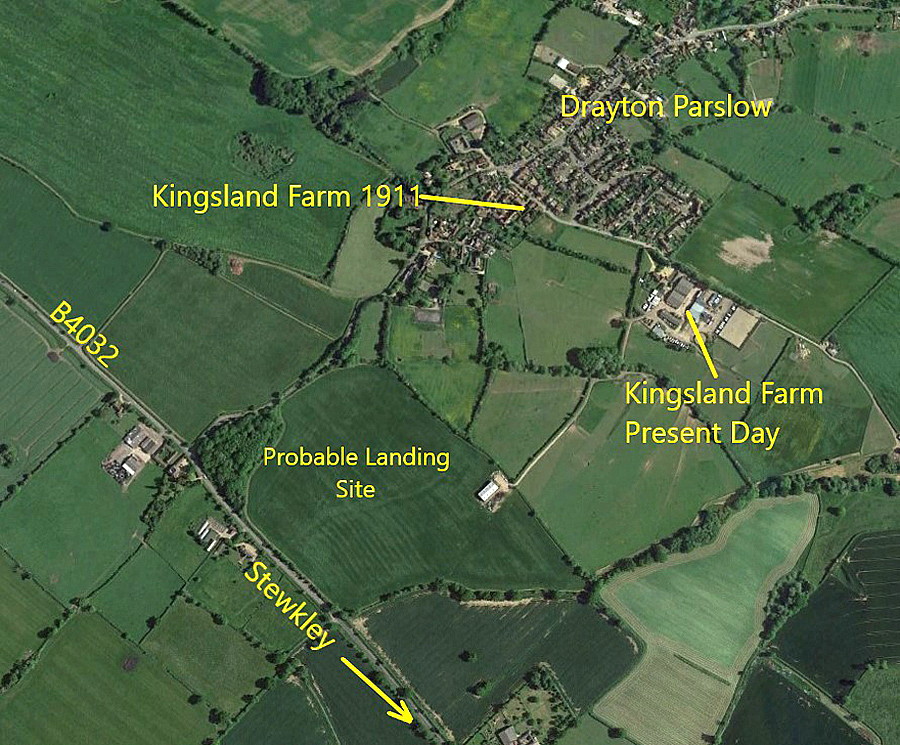Drayton Parslow
DRAYTON PARSLOW: Temporary Landing Ground
On the 17th April 1911, Claude Grahame-White departed from HENDON in order to attend the two day model flying exhibition and competitions at BOURNVILLE. (See seperate listing). Not long after taking off he encountered fog, lost his bearings and made a forced landing in a field near Drayton Parslow. He damaged his tail on landing and whilst awaiting repairs based himself at the Swan Hotel in Stewkley. Later he took off and reaching Birmingham was unable to identify the Bournville venue so landed at SPARKHILL to gain directions.
Location: Just N of the B4032, roughly just SSW of Dayton Parslow village. About 1.5nm NW to NNW of Stewkley and roughly 6nm S of Milton Keynes town centre
A MICHAEL T HOLDER GALLERY
In 2023 Mike Holder, a great friend of this 'Guide', took it upon himself to see if any evidence could be found relating to this forced landing site. As can be seen below, it certainly did make a 'splash' in the press.
The photo and caption are courtesy of Wing Airfield.
Article One was published in the Buckingham Advertiser and Free Press on the 22nd April 1911.
Artcle Two was published in the Bucks Herald on the 22nd April 1911. The picture of the Swan Hotel was obtained from Google Street View ©.
A DETAILED ACCOUNT
This account in three parts, plus a picture, was published in the North Bucks Times and County Observer, also on the 22nd April 1911.
The area view is from my Google Earth © derived database.
NOTES: I now find this era utterly fascinating. You can, in equal measure, describe those early aviators as being heroes, bonking mad, pioneers etc, etc. And all would apply! To us today they really had no idea how aeroplanes fly, let alone how to design and build them. It was very much trial and error at best. And yet, as history tells us, with photographic proof too, they did indeed fly.....but only marginally.
Even so, quite a few embarked on long trips that, a century later, quite a few private pilots would deem to be something of an adventure. But of course, flying an aeroplane today is more about navigation problems concerning controlled airspace, en route radio frequencies and so on. In those days, with no instruments and, being sat out in the wind, maps being useless, and the aircraft 'performance envelope' barely being the size of a postage stamp - they really did have virtually nothing to go on in the way of how to conduct a 'long' flight.
No weather forecasting either. When they set off it really was a flight into the unknown. Making en route forced landings was very much often needed. To obtain fuel and asking directions, to repair failing engines, plus of course - the weather. Not just fog and low cloud etc, strengthening winds with associated turbulence, barely a problem for most light aircraft today, could easily prove fatal.
We'd love to hear from you, so please scroll down to leave a comment!
Leave a comment ...
Copyright (c) UK Airfield Guide
































